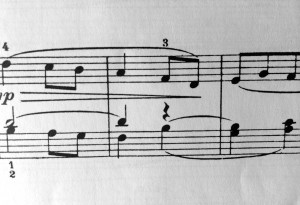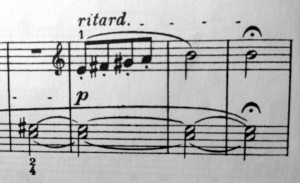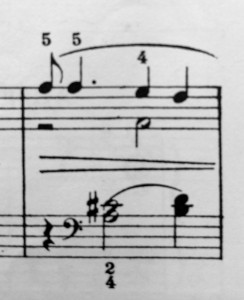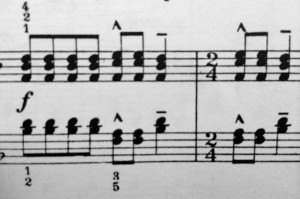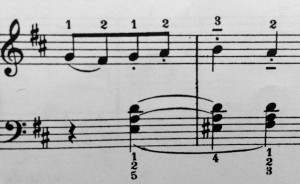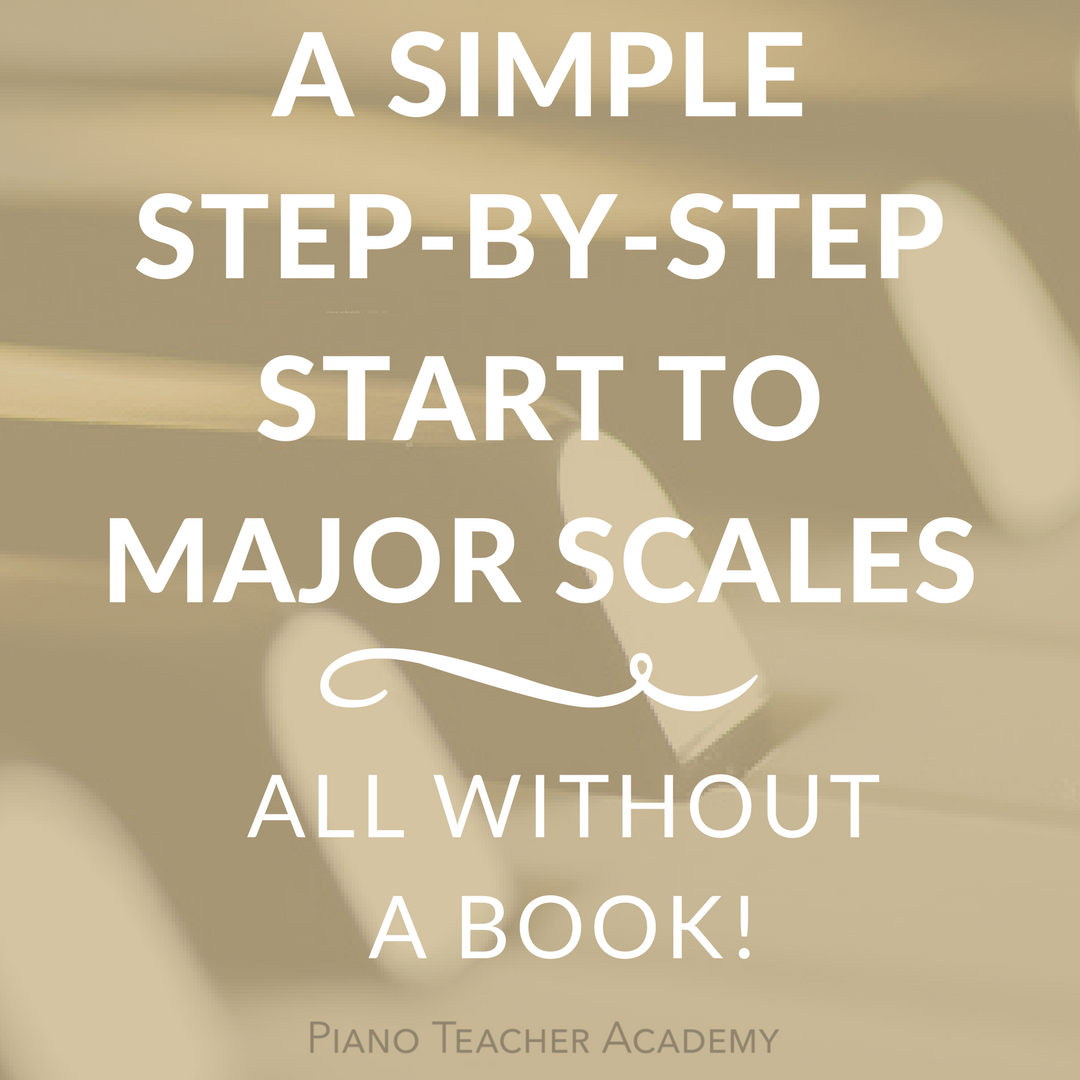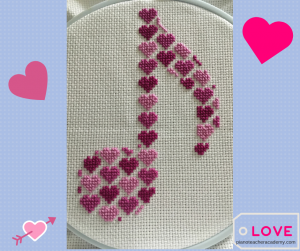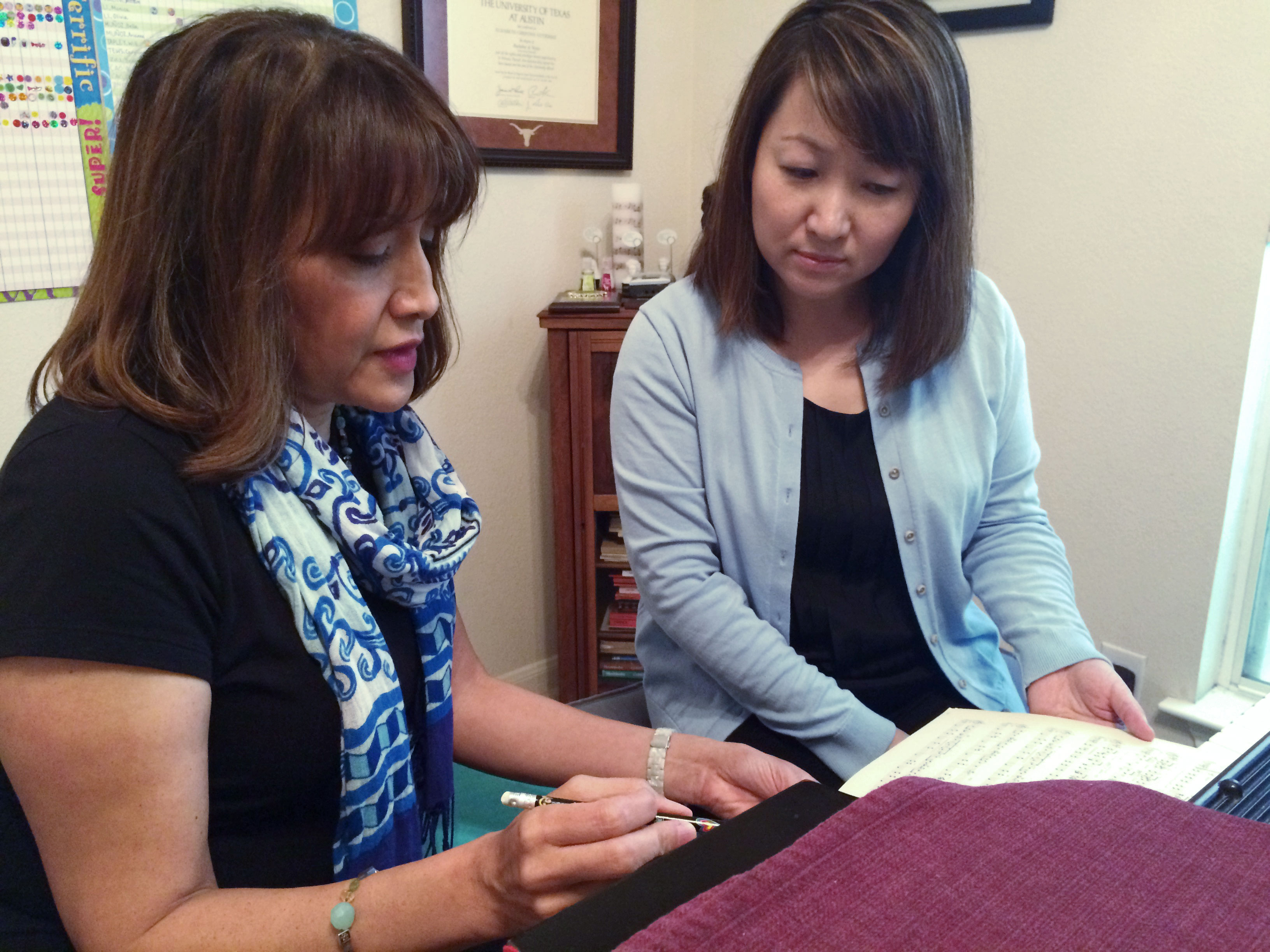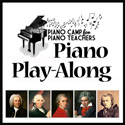Bartok, For Children Vol. I, Play-Along: Post Four (Nos. 11- 15 Reaction)
A new approach to presenting these pieces to you…. so if you’ve haven’t had a chance yet to play through these 5, you should get a good sense of what they’re all about by first listening to the video and then reviewing my reactions. Enjoy, and let me hear your thoughts!
Quick scan thoughts:
- Bartok continues to present varied tempos in these pieces and within a single piece as well. I would classify Nos. 11, 14, 15 as late elementary in level and Nos. 12, 13 as early intermediate, taking into account tempo, coordination of the hands, detailed articulation, and especially the maturity required for expression.
- 4 out of the 5 key areas are centered on “D,” with the tonality being either D Major or d minor.
- I notice “attaca” on Nos. 13 and 14. Perhaps Bartok intended Nos. 13,14, and 15 to be performed as as set? It would work well.
- All the pieces are less than a minute in length, except for no. 12. He is a master at saying a great deal in such a short amount of time.
- Bartok continues to create much nuance and inflection through his highly specific use of dynamics, articulation, and tempi.
No. 11 – Untitled (“Lento”)
The Expressive Idea: Sweet, tender melodic playing in a highly expressive manner.
Technical Challenges: A student should already be familiar with the execution of part-writing in the LH (2 or more voices in the hand). In this case, there are “tie-downs” as pictured here:
Playing doubled-notes legato is also required. This is a great lesson in evocative playing and both hands get the chance to do this. The melodies must be shaped quite expressively for a convincing performance. Besides the hairpin cresc./dim. markings, notice the Bartok’s use of espr. and molto espr.
Unique Aspect: I love how Bartok incorporates a fragmented version of his main theme as his closing theme. Very clever and effective! The PP dynamic at the slower tempo will require some control. Notice Bartok’s specific use of the pedal at the end to inform the performer of the importance of connecting the chords.
Correlated To: Faber Piano Adventures, mid-to-late 2B to Early 3A, but keep in mind the LH stretches and LH legato technique required.
No. 12 – Untitled (“Allegro”)
Enjoy this beautiful recording of Geza Anda performing this piece (Sold!)
The Expressive Idea: Very child-like melodic theme. In stances like these, I ask students to describe the scene or mood implied by the innocent sound of the theme, especially as it travels here to the lower register.
Technical Challenges: The broken-chord accompaniment in both hands is unusual. Requires strength and agility in the 4th and 5th fingers of LH and rotation technique here is a must! In m. 28, my preference is fingers 5 and 3 for beat 1 rather than 3 and 2. Keeping this accompaniment consistently controlled and quieter than the melody will take some work. And I wonder why Mr. Anda leaves out the pedalling that Bartok indicated. Personally, I think it supports the cresc. effect and creates good contrast.
Unique Aspect: In mm. 24- 27 and again in mm. 52-56 it seems as if Bartok might modulate, yet he reverts both times to C Major. Interesting…
Correlated To: Faber Piano Adventures, Level 3B or later due to the intricate finger work and opposing articulations.
No. 13 – Ballad
The Expressive Idea: The only one of the 5 pieces with a title. So I would ask the student in this case: “What’s the story all about?” Note how Bartok uses espr. markings with the melodies in both the RH and LH. I often tell students that this is a clear clue that the narrator in this ballad is really trying to get a point across to the listener.
Technical Challenges:
- RH control of long notes which must be played in a hushed, sustained manner.
- Smaller hands may have trouble playing the RH of m. 12 Use pedal between the notes if needed:
- In m. 16, play the rolled chords slowly and gently. In the video above, you’ll hear how they sound clipped and abrupt when played too fast.
Unique Aspect: Bartok can sure say a lot in such a short time. Through his clever use of harmonies, you might never realize that this piece is a mere eight-measure melody repeated once. Note his use of “attaca” at the end and no double bar. He intended this to move right into No. 14, which is also in the key of D minor.
Correlated To: Faber Piano Adventures, Level 3B or later; the student should be familiar with syncopated rhythms, part-writing texture, and thumb tucks,
No. 14 – Untitled (Allegretto)
The Expressive Idea: A rather quirky piece with its fragmented melodic ideas. It has an insistent quality as each idea is expressed more loudly than the previous. And then it becomes calm again. I can see how this might serve as a link between two other short pieces (see “attaca” at the last measure).
Technical Challenges: Special attention must be given to the expression and timing of this piece in all its quirkiness. What exactly is being expressed? The dynamics and articulation are especially revealing.
Here’s a statement that appears out of the blue and not at all linked to the previous melody:
Unique Aspect: I’m beginning to notice how Bartok often uses his main theme, or portion thereof, as his conclusion to a piece.
Correlated To: Faber Piano Adventures, Level 3A or later; student should be familiar with alternating-finger staccato and dotted rhythms; a strong sense of rhythmic division is necessary and a hand span of a 7th
No. 15 – Untitled (Allegro moderato)
Of Nos. 11- 15, this one is the most often played.
The Expressive Idea: Lots of graceful, cheerful humor here. This piece contains the same off-beat accompaniment in the LH as in No. 5, which gives it a nice romp. However…. notice how Bartok uses a quiet dynamic (P) and leggiero for every entrance of the theme therefore informing us not to give it too much “romp.”
Technical Challenges: Though I categorize this piece as late elementary in level, those with small hands need to beware of the use of harmonic 7ths in the LH, especially 7ths with a note within such as this one:
Unique Aspects: This piece is created simply from two 4-mm. phrases which Bartok manipulates through tempo and/or harmonization. At this point in the Play-Along, I’m beginning to notice Bartok’s affinity for entrances on off-beats, especially in the LH.
Correlated To: Faber Piano Adventures, mid-to-late 2B, and small hands will need to be able to reach a 7th.
No. 12 is a new favorite for me. What’s yours?
